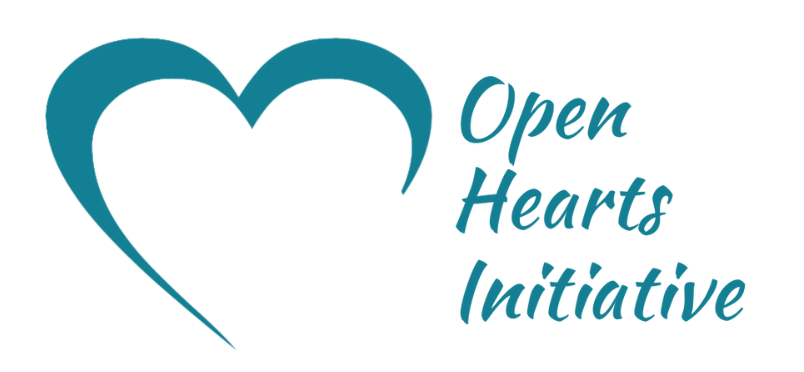Step-by-Step Guide to Hosting a Chalking Event
In 2020, at the onset of the COVID-19 pandemic, New York City started to move people experiencing homelessness into temporary hotel shelters to comply with social distancing requirements. In response to virulent backlash in the city’s Upper West Side neighborhood, the Open Hearts Initiative got its start as a group of residents who wanted to show that there were many neighbors who did support these shelters and were eager to welcome new neighbors. Open Hearts co-founder Amanda Fialk got the idea to express support through a chalking event – writing positive, loving, and welcoming chalk messages to residents on the sidewalk outside of the shelters – from art protest group All Street Journal.
For Open Hearts, the goal of chalking has always been twofold. First, it communicates to the general public, as well as elected officials and decision-makers, that there are actually neighbors who do support welcoming people experiencing homelessness to their communities. In 2020, Corinne Low, a co-founder of Open Hearts, shared, “When DHS [the New York City Department of Homeless Services] wants to place a shelter, all the opponents will get on the Community Board meeting and yell about how they don’t want it,” but the people who are “just happy for it to be there” typically don’t speak up.
Second, chalking communicates welcome and kindness directly to residents. An article published about Open Hearts’ early chalking efforts said that “The first time Shams DaBaron realized not everyone on the Upper West Side wanted the homeless shelter where he was staying gone, it was in a message written in chalk under his feet.” Shelter residents at the Lucerne shared how powerful it was for them to see positive messages, after knowing they were in the middle of a negative media storm and that many UWS residents resented their presence. When Open Hearts volunteers recently chalked outside of a shelter for asylum seekers on the Upper West Side, folks living there were so excited to see (and take lots of pictures of) the messages outside.
A chalking event is fun, creative, and can have a real impact! Showing up as a group to chalk (and filling up the sidewalk as much as possible) is a great way to express power in numbers. It can also be the beginning of ongoing efforts to connect with and support shelter residents in your community in many ways.
STEP 1: Identify a site for chalking
Is there a shelter, supportive or transitional housing site, or other location serving neighbors experiencing homelessness in your community that has been the subject of backlash from some community members? Whether this site is already open or still under construction, this is exactly the kind of place where chalking can be helpful.
STEP 2: Decide on a date and time to host the event
Choose a date and time when you anticipate that a few friends or neighbors will be available to come join you! If the site is already open, you may want to reach out to shelter staff to give them a heads up about the event. This can help ensure the event will be successful and give you an opportunity to start to build a relationship with shelter staff so they can communicate ongoing needs at the site.
STEP 3: Spread the word!
Again, chalking is such a powerful action because it is a display of power in numbers. It doesn’t require dozens of people to show up, even if you just have a few friends who can join you, you can get a lot done! This is also a great event to involve kids in.
Step 4: Purchase supplies
You’ll need lots of multicolored chalk, as well as (optionally) water and snacks for volunteers and residents.
Step 5: Prepare materials
For volunteers: Come up with a list of helpful phrases and images that volunteers can refer to as they chalk. If you've heard from shelter staff that many residents speak other languages, it would be great to include sample phrases in those languages as well. Check out the example below from Open Hearts!
For shelter residents and passersby: Inform them about your group and future opportunities to get involved. Take a look at this example printable information sheet from Open Hearts.
BEFORE:
TIP: In situations where you want to show support and welcome to folks at a site that hasn’t been getting a lot of backlash or media coverage, you might want to consider welcoming folks in a different way that is less visible to other neighbors, e.g. by assembling and distributing “welcome kits" so as to not unintentionally draw attention to the site in a way that makes life harder for residents there.
TO THE MEDIA?
In cases where a shelter site has already been the target of intense pushback (which has been covered by local media), you may want to consider alerting the media to your chalking event. Chalk is a great visual, and this can be a helpful way to publicize community support and provide a powerful counterpoint to the backlash. It’s important to make sure, however, that media presence doesn’t detract from what you’re trying to accomplish or make shelter residents uncomfortable. Depending on the situation, you might balance these goals by inviting just one reporter rather than several news outlets, or not inviting media to the event itself but sharing photos of the event and offering an interview afterwards.
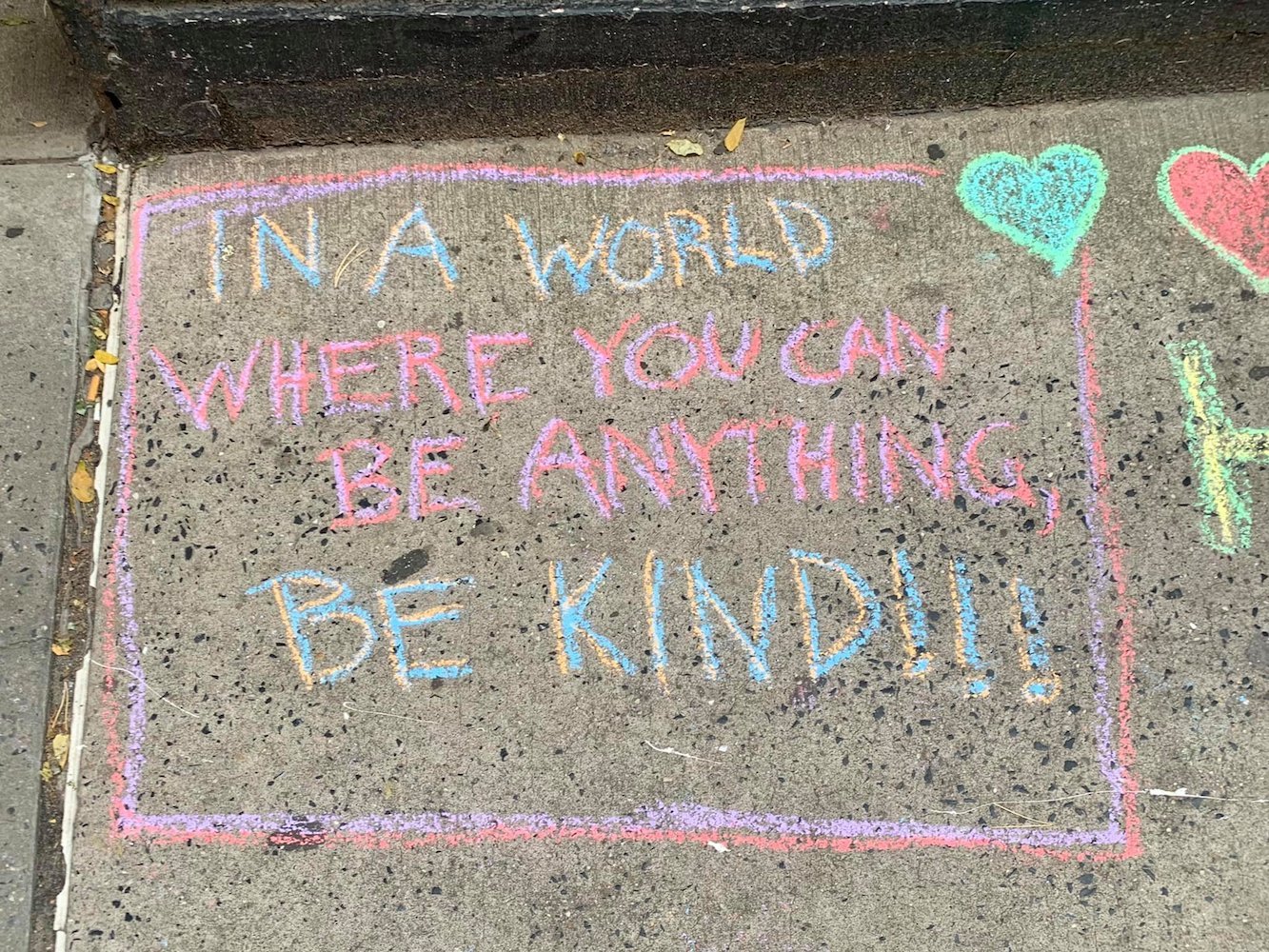

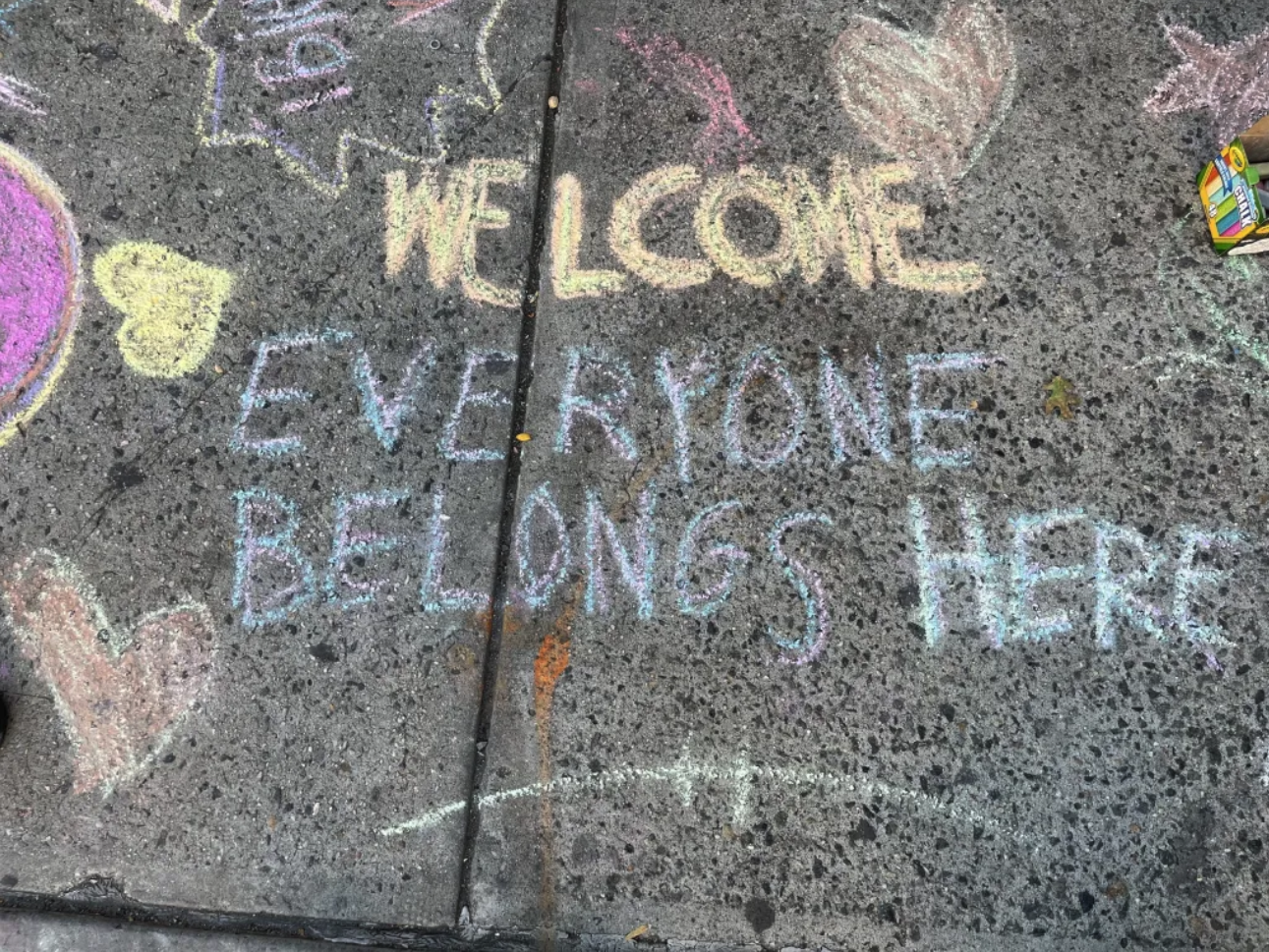


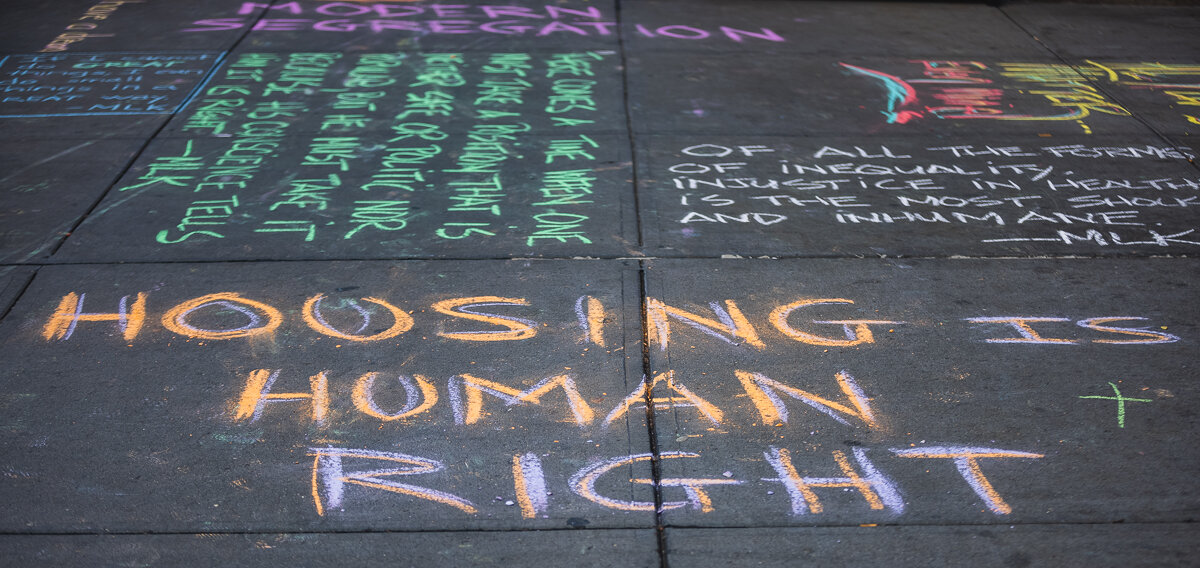
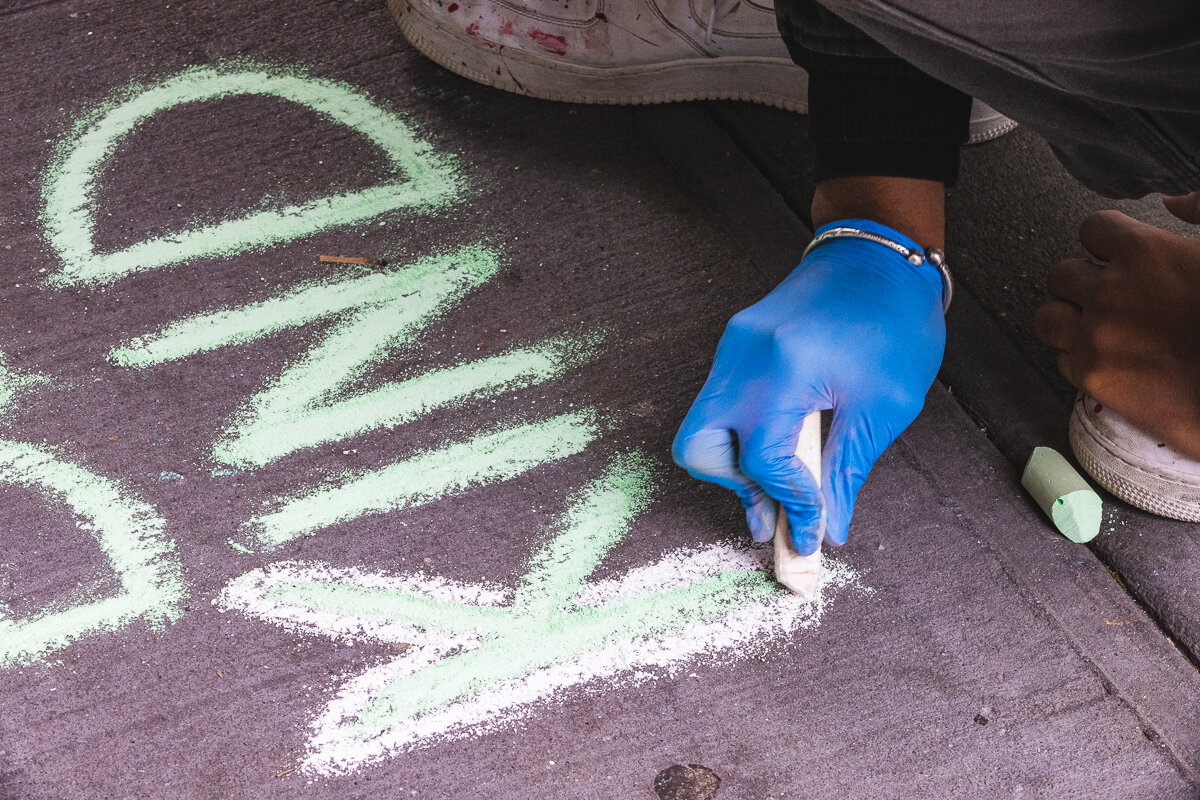
Be creative!
You can share the list of helpful phrases and images with volunteers, but also encourage them to use their creativity, artistic expression, and language skills to create unique designs.
DURING:
Take lots of photos of the beautiful chalk art!
Maintaining the personal privacy of your neighbors is very important. You should refrain from taking photographs or sharing the personal information of anyone who has not given you permission to do so.
Talk with shelter residents
Chalking is a great opportunity to build these one-on-one relationships between neighbors!
Be prepared to talk with other neighbors and passersby.
Many neighbors walking by will likely be curious about what you’re doing! Consider this an opportunity to connect with new people and bring them in as supporters of your work. You can explain what the shelter is, how much backlash it’s receiving, and how they can show support and kindness. You can even encourage them to chalk with you!
Share photos of your chalking on social media
You can share the list of helpful phrases and images with volunteers, but also encourage them to use their creativity, artistic expression, and language skills to create unique designs.
AFTER:
Look out for opportunities to continue supporting residents at that shelter site
After Open Hearts chalked outside the Lucerne, shelter resident and advocate Shams DaBaron reached out to OHI, and shared that residents needed many more things. Open Hearts leaders sat down with him, and ended up facilitating weekly AA meetings at the shelter, collecting donations and MetroCards for residents, and hosting “soulful walk and talks” in the park with local faith leaders. Chalking can be the start – but not the end – of your support for shelter residents!

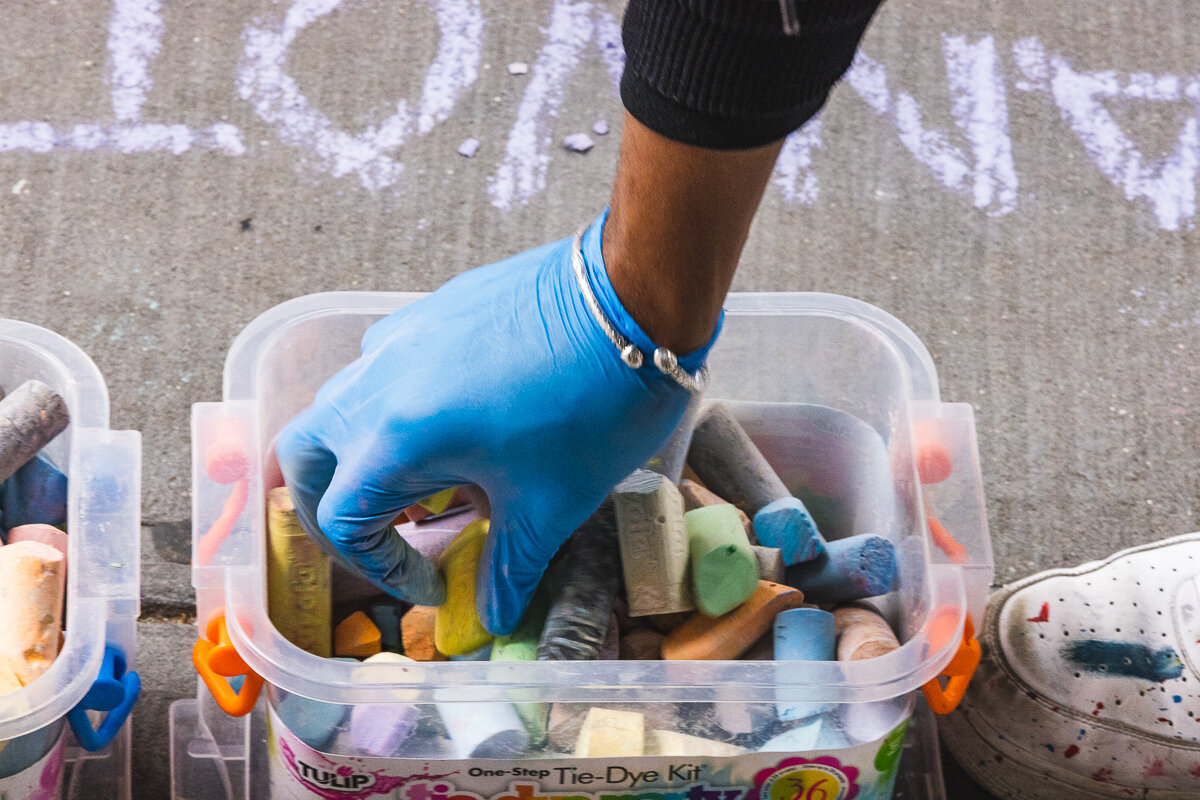
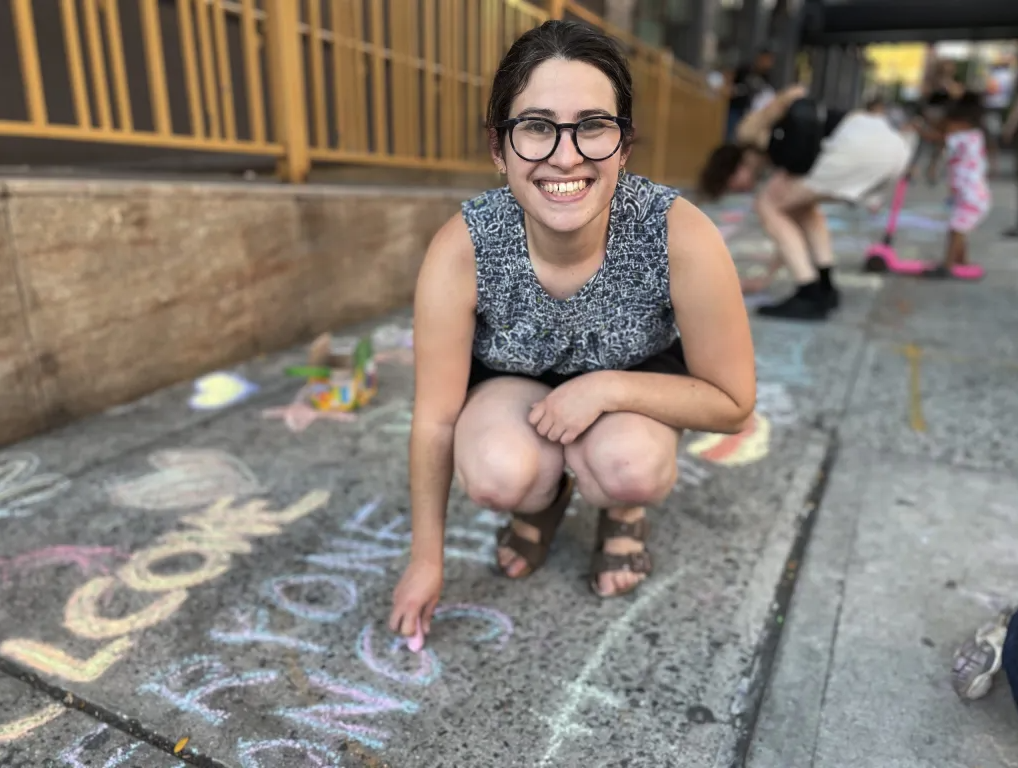
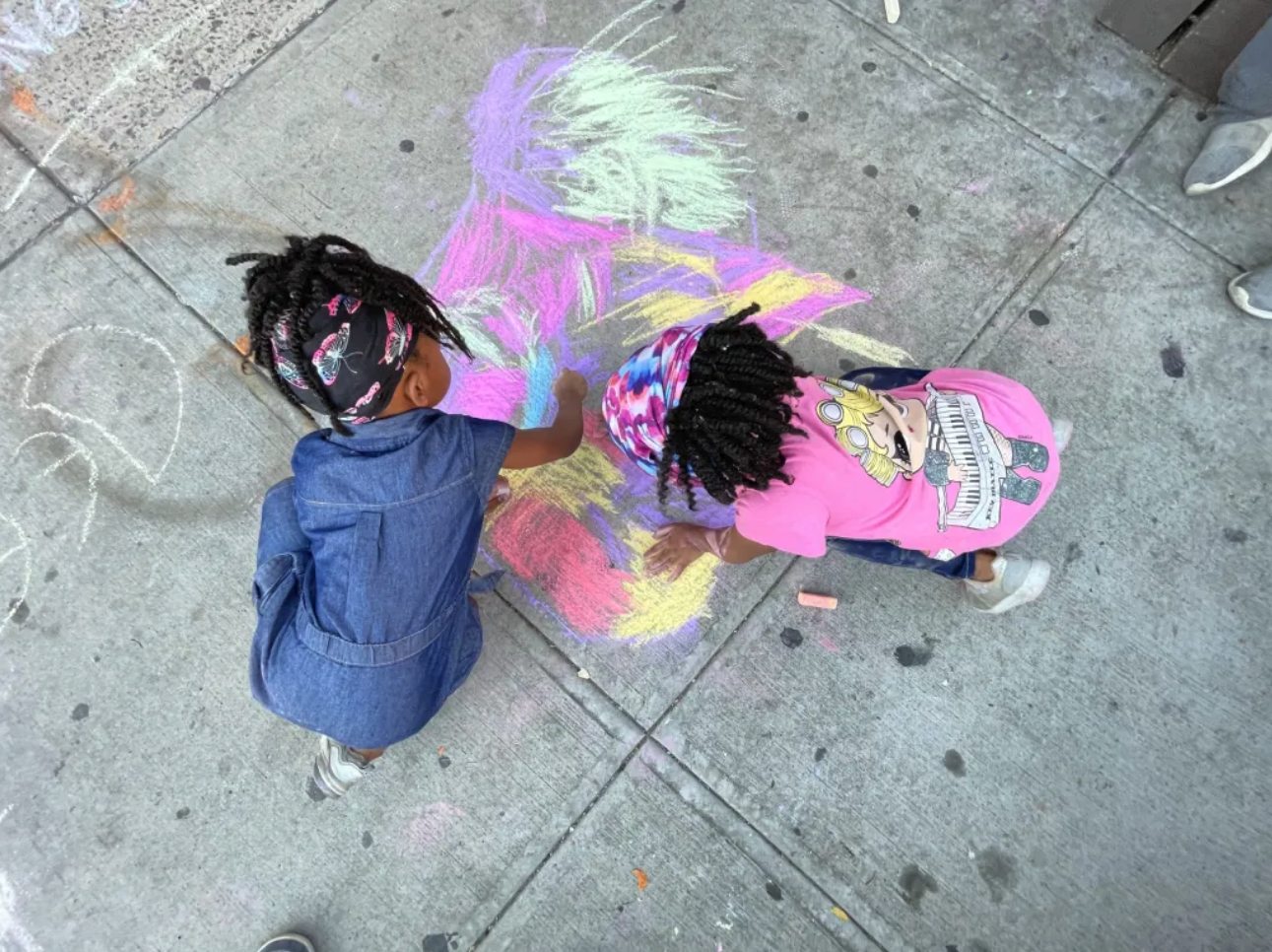
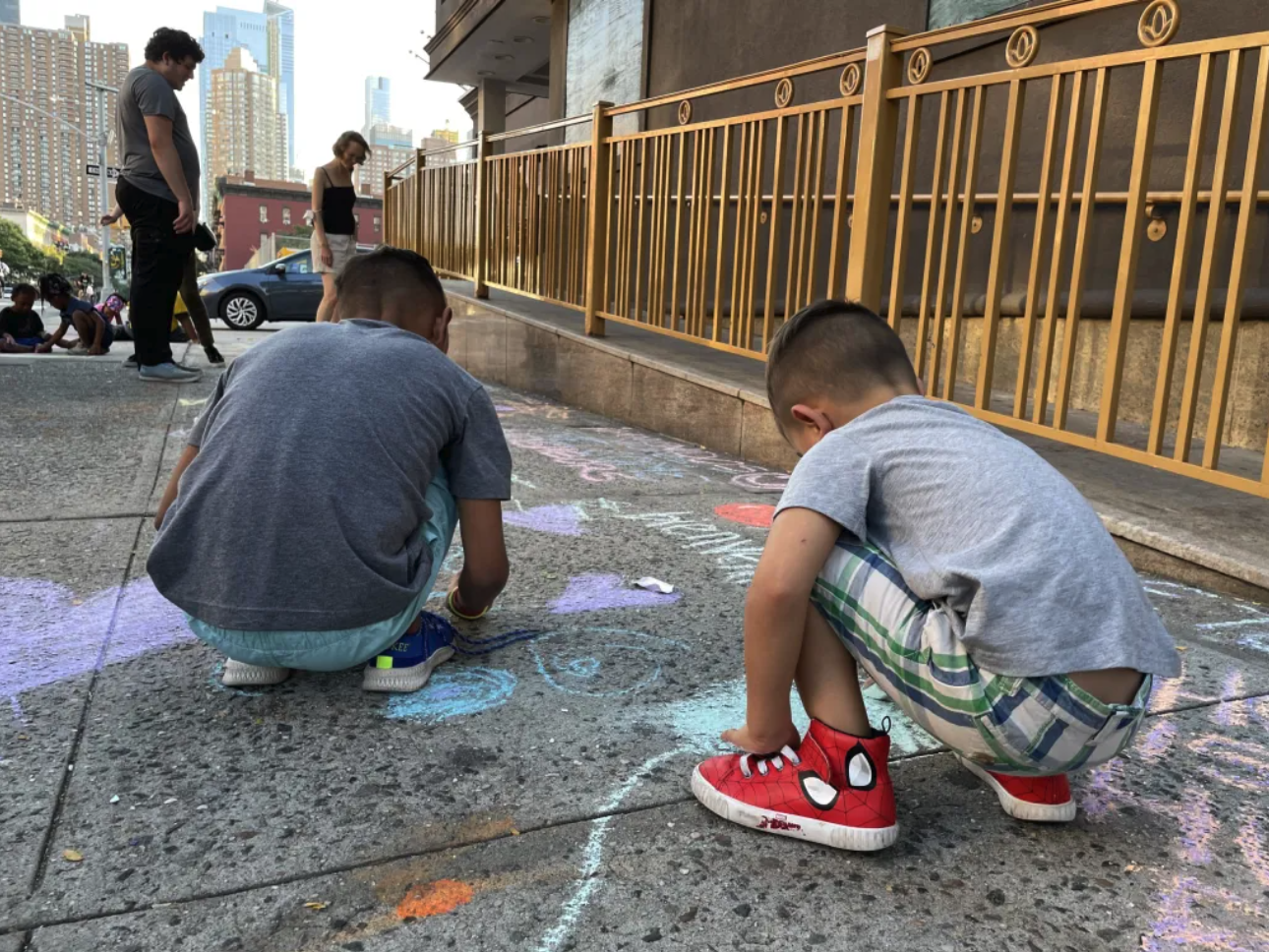
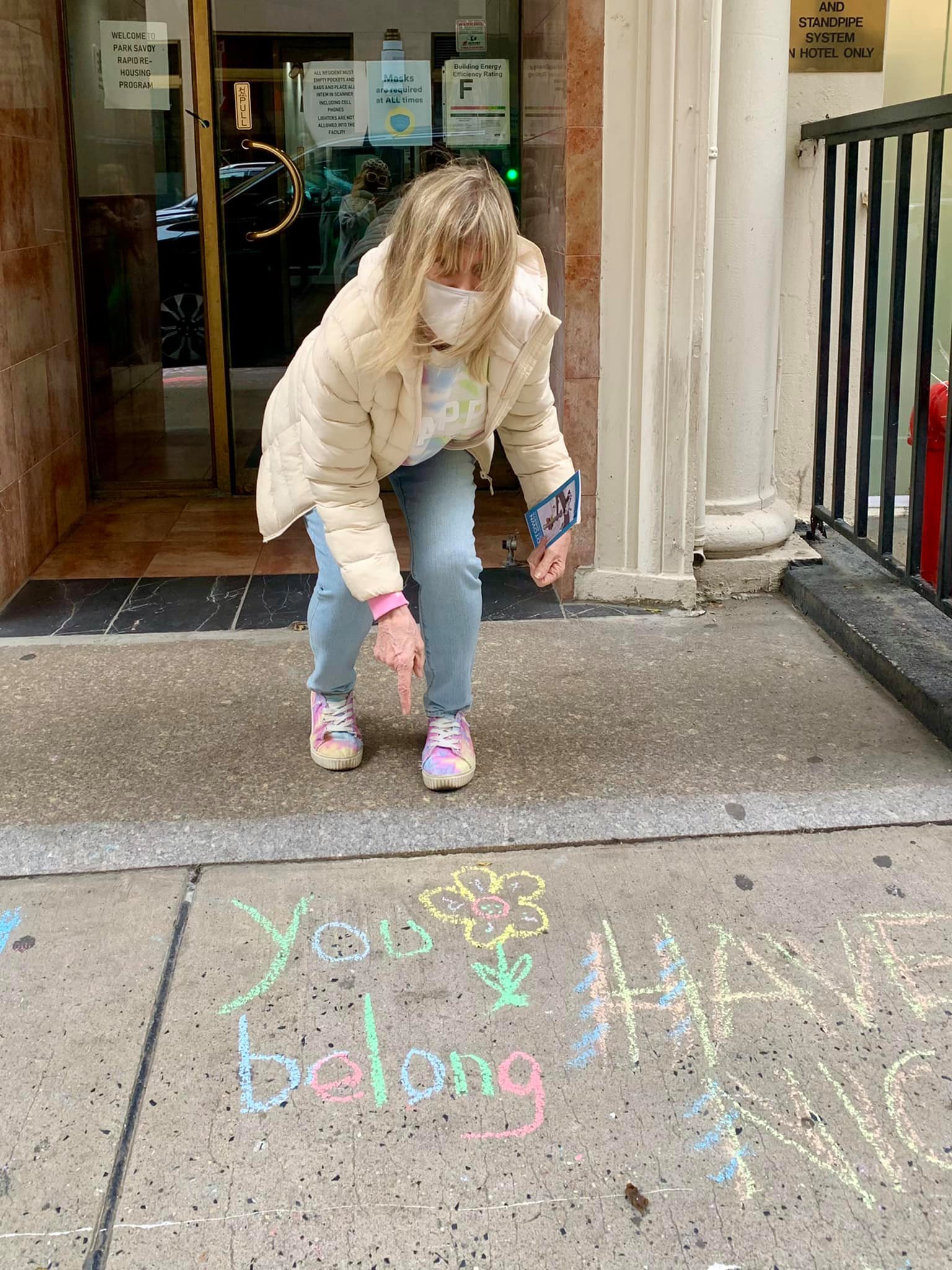
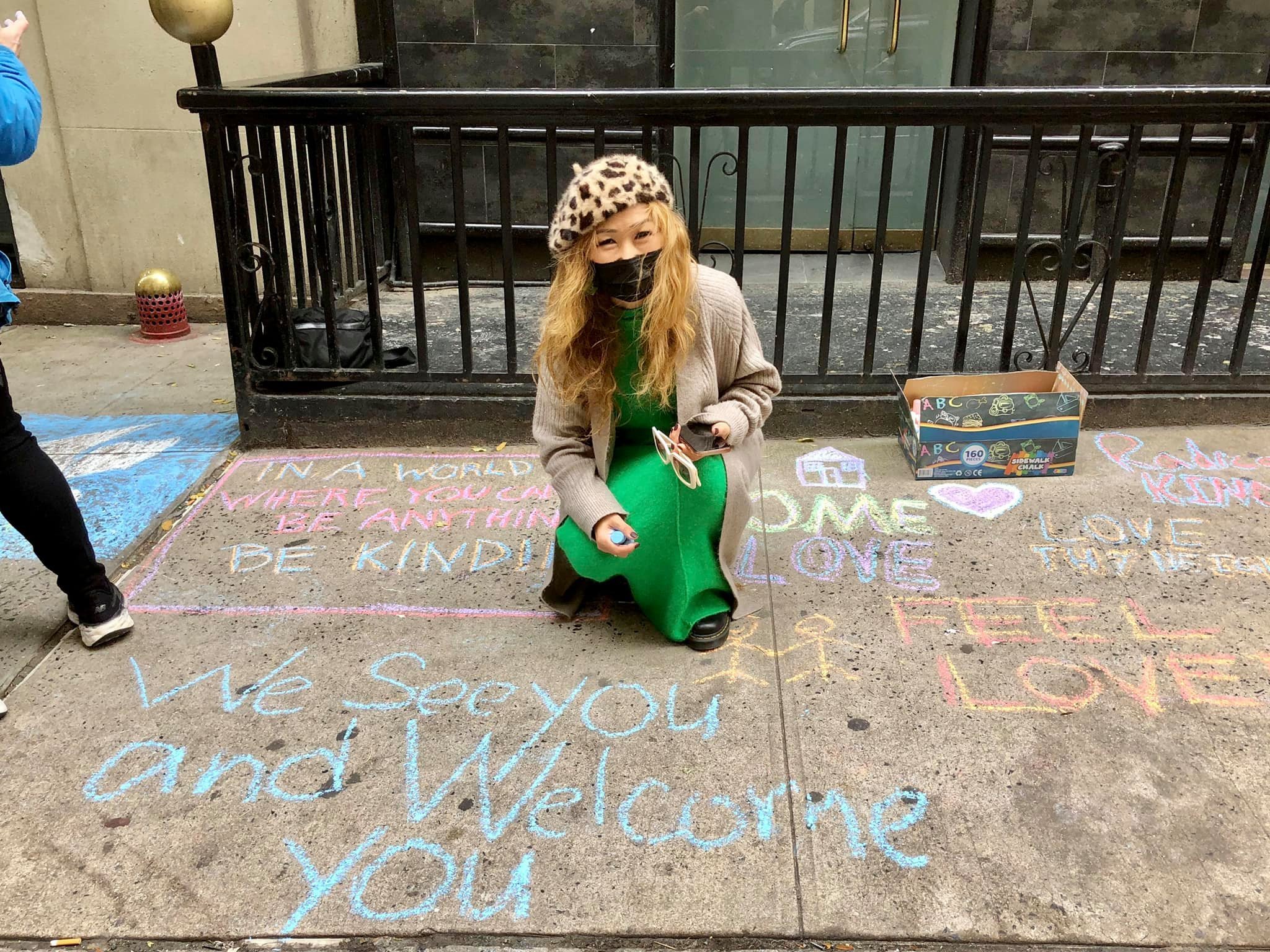



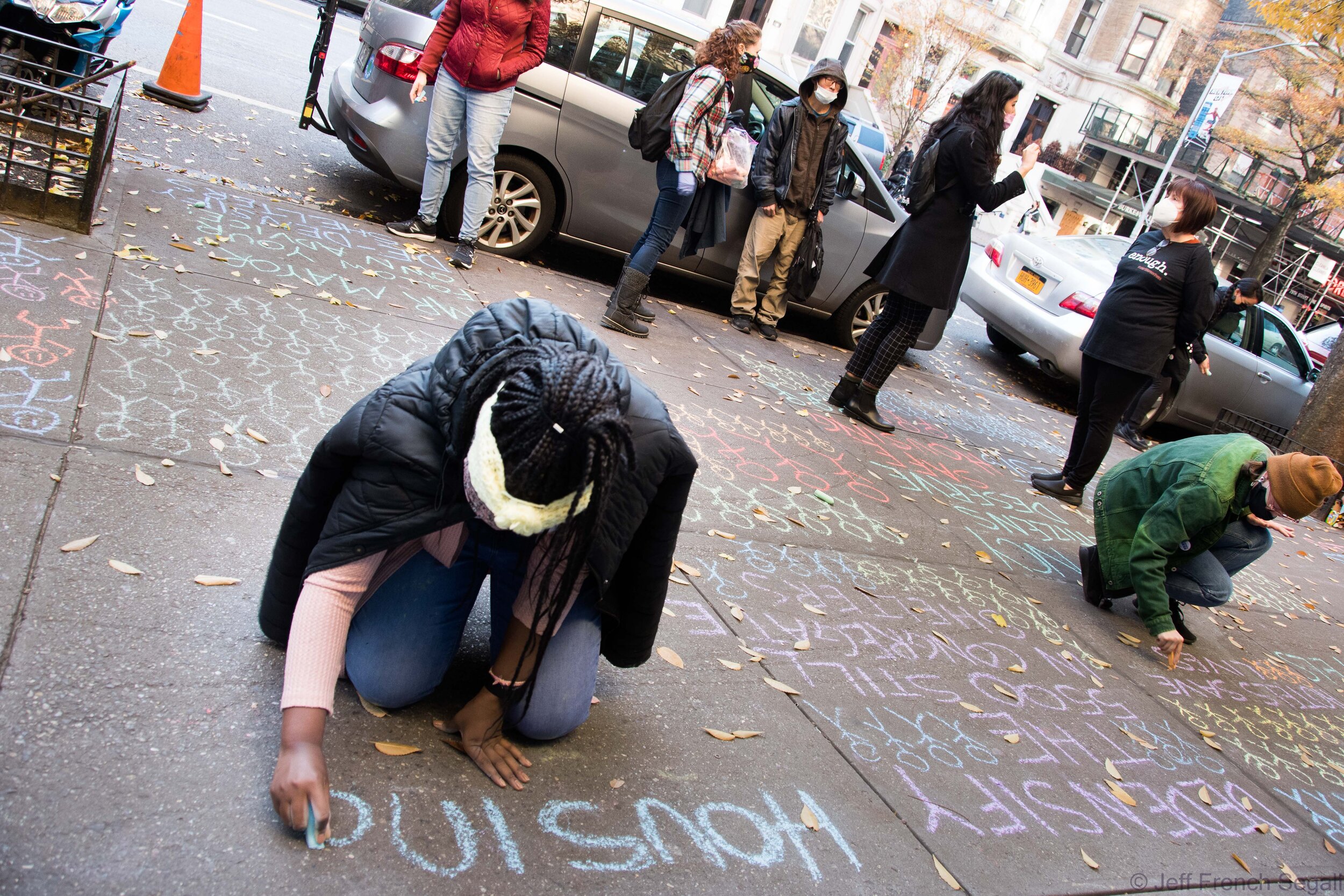
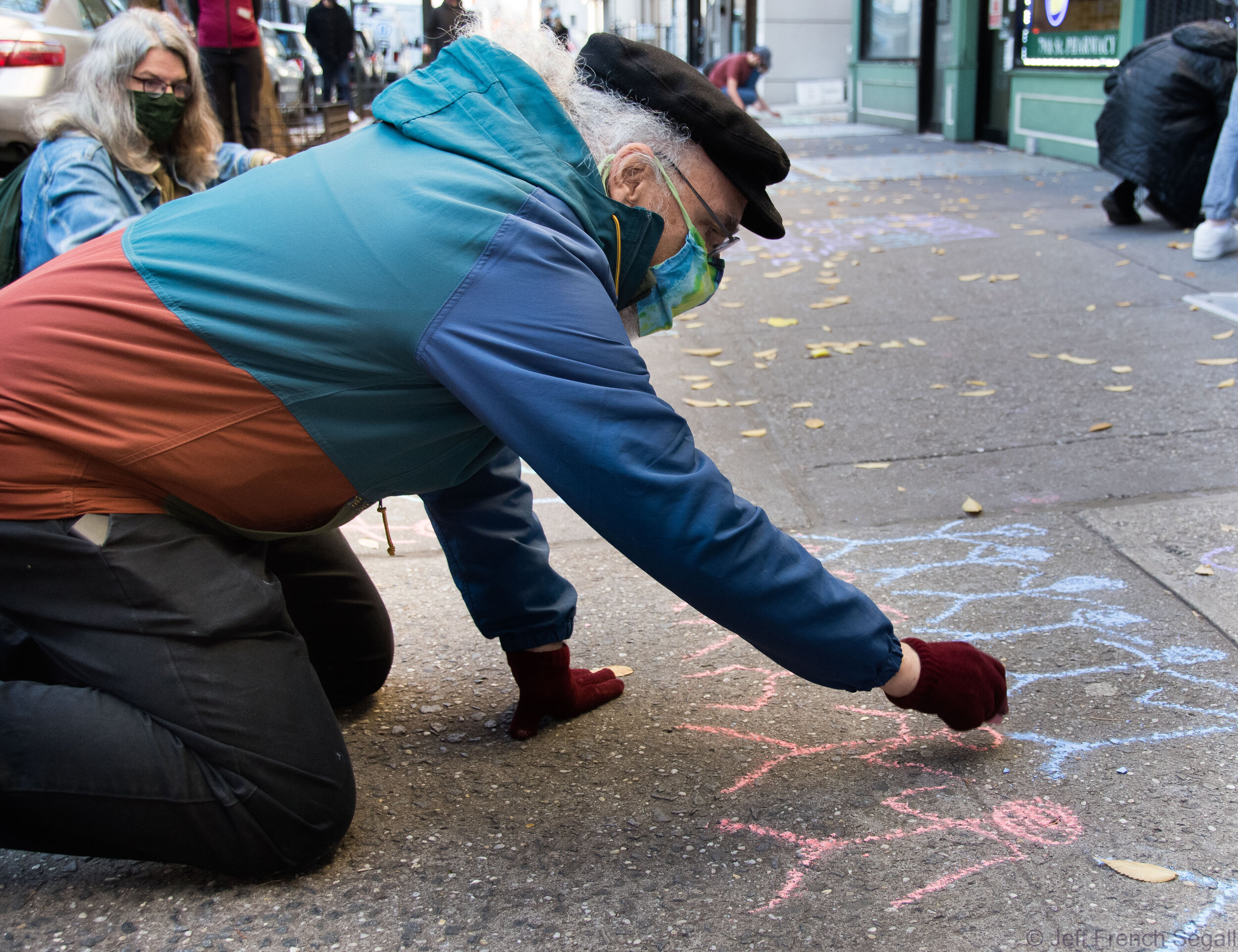
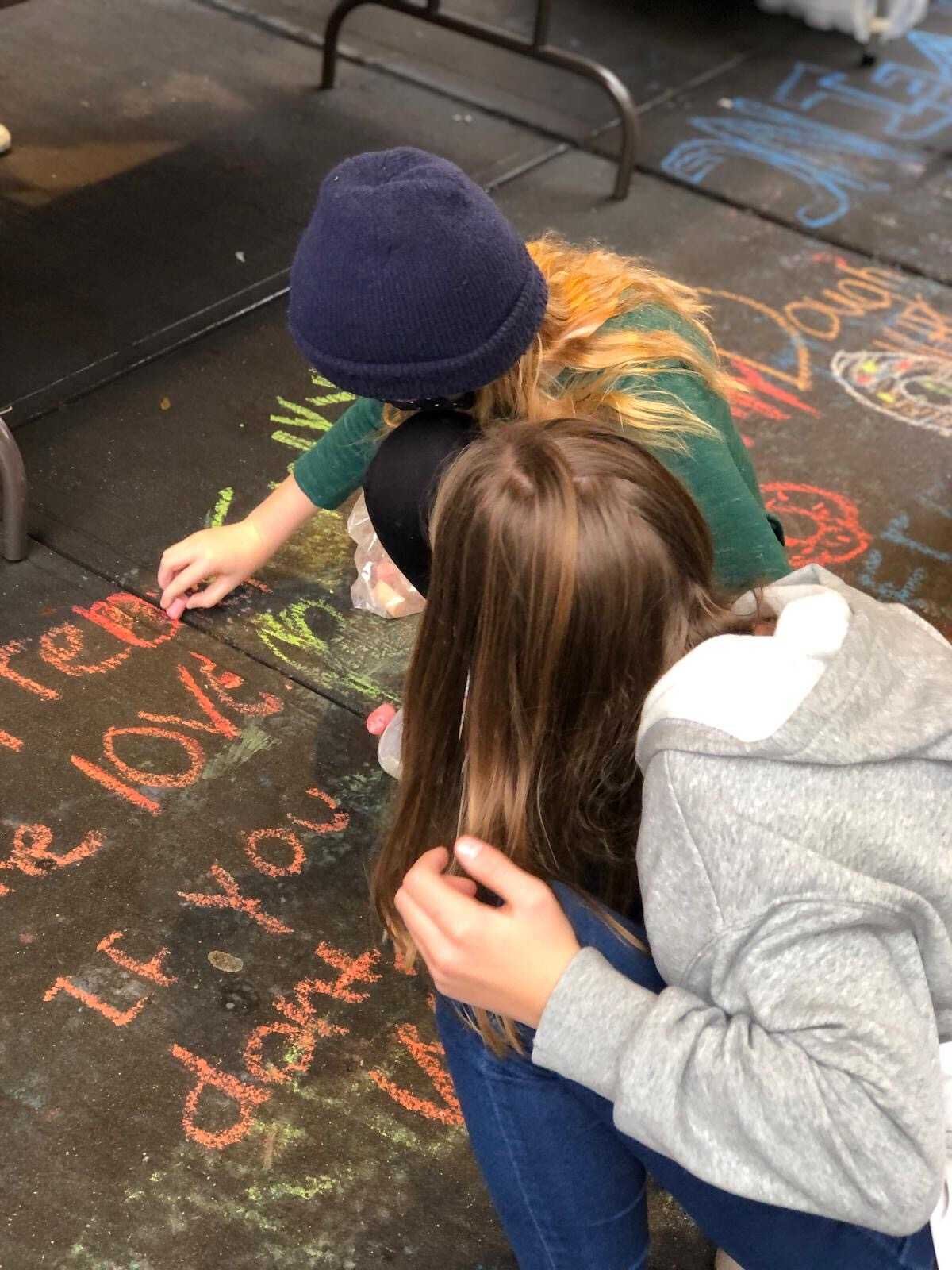

CONTACT US
Have any questions/suggestions about this guide, or want to share photos of your chalking events?
